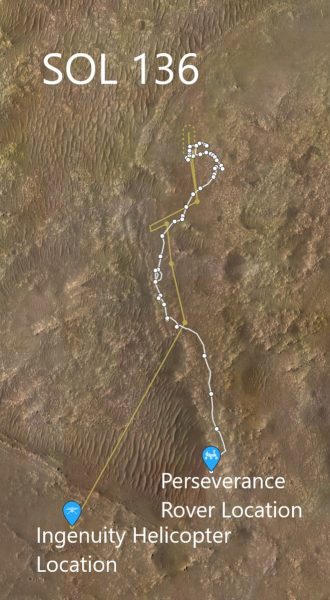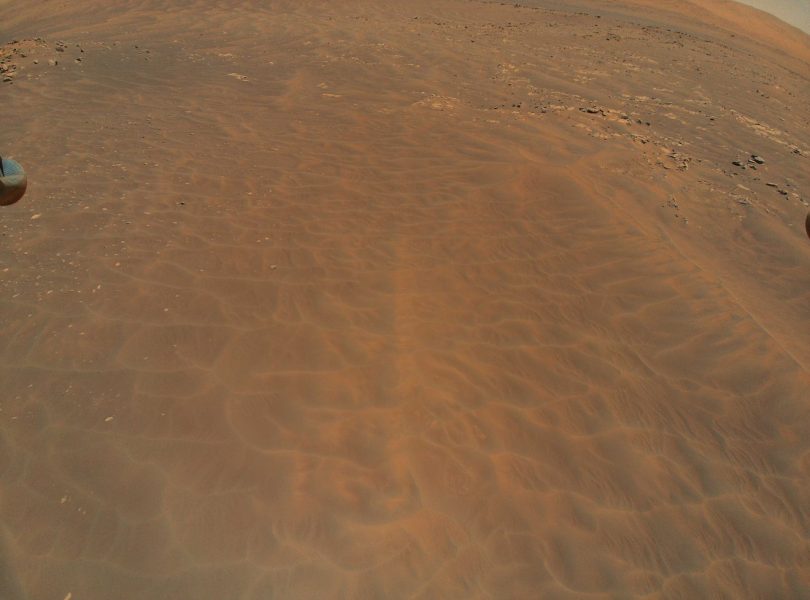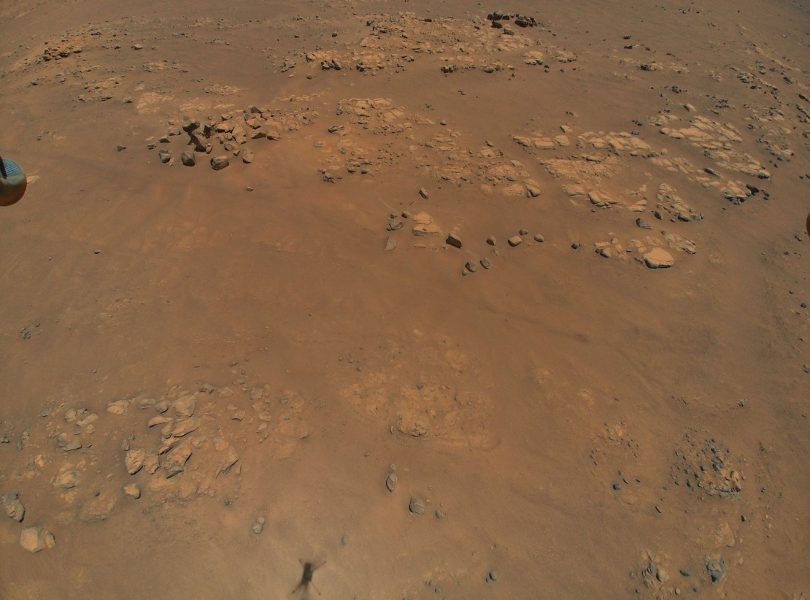The Ingenuity Mars helicopter has proven itself a valuable asset to Perseverance, scouting out terrain that the rover can’t cross.

NASA / JPL-Caltech
NASA’s Ingenuity Mars helicopter is proving its worth on the Red Planet, acting as an advance sentinel over dune-covered terrain that the rover Perseverance is avoiding.
My science team is poring over these color images from the #MarsHelicopter’s latest flight. Ingenuity crossed over a region that would be tricky for me to drive on, adding a new perspective to the picture of Jezero Crater that I’m piecing together.
More: https://t.co/TOTCbrelob pic.twitter.com/TN6MCCHU1L
— NASA's Perseverance Mars Rover (@NASAPersevere) July 9, 2021
Ingenuity's ninth flight over the Séítah dune field was a risky one. Perseverance is driving around this region because “sand is a big concern,” says Olivier Toupet (NASA-JPL), who leads the team that plans Perseverance's drives. “If we drive downhill into a dune, we could embed ourselves into it and not be able to get back out.”
But the flight over uneven terrain was risky for Ingenuity as well, because the helicopter has to find its own way as it flies using autonomous navigation. The varying heights of the terrain can confuse the nav system. Håvard F. Grip and Ken Williford (on the Ingenuity and Perseverance teams, respectively) outline the procedure they had to take in their latest blog.

NASA / JPL-Caltech
Ultimately, the flight was a success, again breaking records both in flight duration (2 minutes and 46 seconds) and cruise speed as it crossed over 625 meters of land. Ingenuity snapped some amazing color images of the dunes from its vantage point 10 meters overhead — views we would not have seen otherwise.

NASA/JPL-Caltech
Generally, rovers rely on NASA’s HiRISE (the High Resolution Image Science Experiment) on the Mars Reconnaissance Orbiter for overhead views. Those images have a resolution down to about 3 feet (1 meter). Ingenuity complements that data with a much higher-resolution view of the terrain.
Particularly intriguing are bedrock and raised-ridge features beyond the dune field that Ingenuity spied during its July 5th flight. Planners hope to have Perseverance drive over to these ridges for a closer look. These sorts of features hint at a fracture system, which may have channeled flowing water in the past.

NASA / JPL-Caltech
Early on in the history of Mars, Jezero Crater hosted a lake, and regions of associated ancient water flows are prime sites to look for possible signs of past life. A principal objective for Perseverance is to collect and cache regolith samples from regions such as these for eventual return to Earth. In the coming years, a second mission combining a sample return platform and ascent rocket will touch down nearby to take these samples home.
“Once a rover gets close enough to a location, we get ground-scale images that we can compare to orbital images,” says Ken Williford (NASA's Jet Propulsion Laboratory). “With Ingenuity, we now have this intermediate-scale imagery that nicely fills the gap in resolution.”
Breaking Records, Taking Names
After the helicopter’s first historic flight on April 19th, it has flown nine times total so far, breaking records nearly every time it takes to the skies. The fifth flight saw Ingenuity’s first landing at a new location, as it flew 129 meters (423 feet) to the south of Wright Brothers Field to a new airfield. This marked the formal end of the technology demonstration, but the solar-powered helicopter was in good health, and NASA extended its operations into a new phase.
Since then, the helicopter has kept pace with Perseverance, landing at several new airfields. The team plans to continue to fly Ingenuity every few weeks at least until the end of August, when Mars will recede behind the Sun from Earth’s point of view. (Mars reaches solar conjunction on October 8th.)
The helicopter's operations phase helps pave the way for missions such as Dragonfly, a full scale nuclear-powered helicopter that may begin flying the skies of Saturn’s large moon Titan as soon as 2036.
It will be fascinating to follow Ingenuity as the helicopter completes its final flights on Mars in the coming weeks.
 3
3









Comments
Anthony Barreiro
July 14, 2021 at 8:59 pm
It's too bad that the little helicopter can't land on the back of the rover and piggyback along for the rest of the mission. I'll bet there will be plenty more situations when an aerial view would be helpful. Plus it's just so darned cute!
You must be logged in to post a comment.
Eric Rachut
July 17, 2021 at 12:57 pm
Diito that!
You must be logged in to post a comment.
Yaron Sheffer
July 18, 2021 at 5:21 pm
Nuclear powered helicopter to Titan? This is insane. Will humanity never stop its irreversible pollutionist exploration of other worlds?
And what is the point of going to Titan? Life here did not start at -180 C degrees, so there aren't any life forms waiting for us on Titan!
You must be logged in to post a comment.
You must be logged in to post a comment.